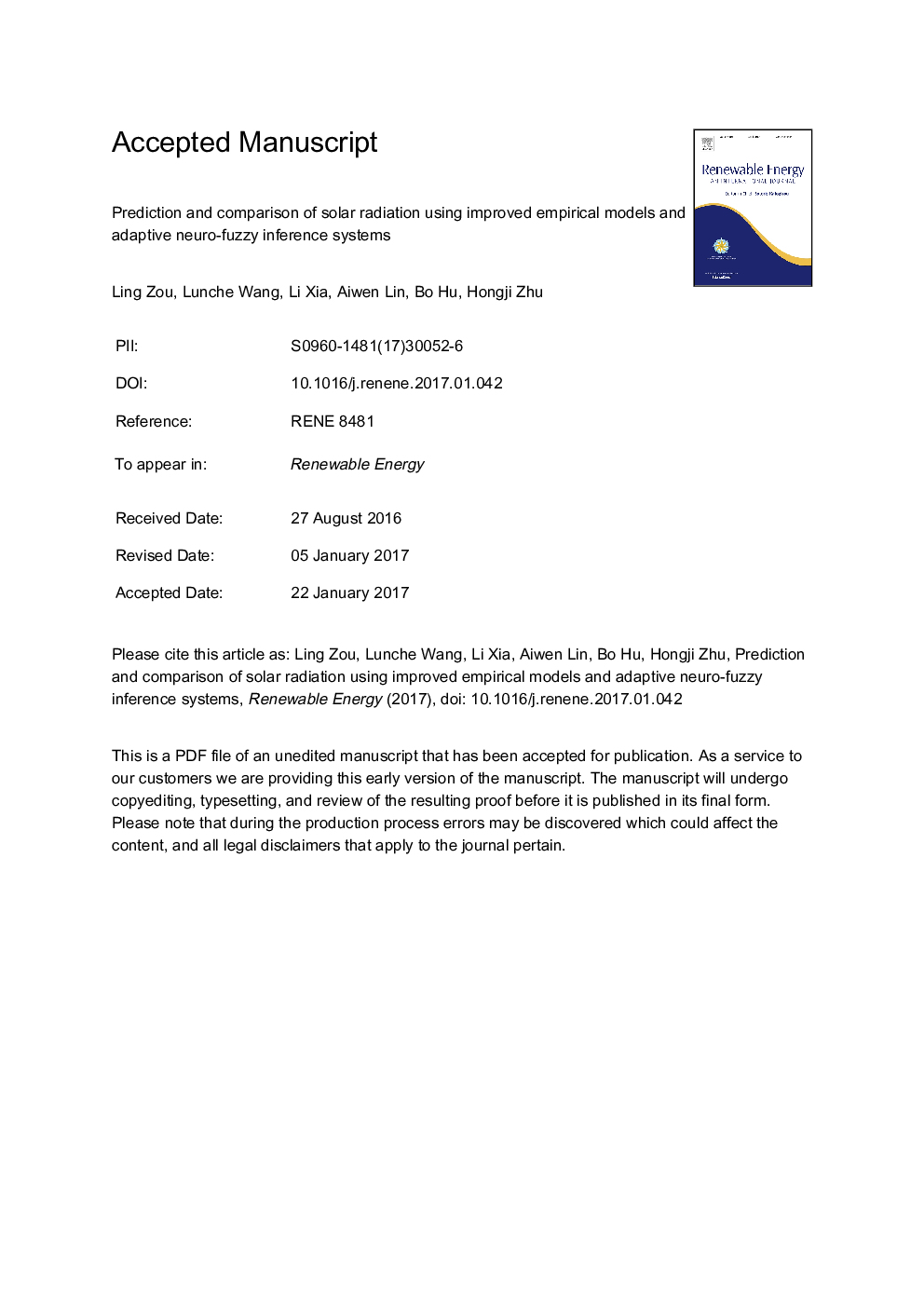| کد مقاله | کد نشریه | سال انتشار | مقاله انگلیسی | نسخه تمام متن |
|---|---|---|---|---|
| 4926403 | 1431598 | 2017 | 24 صفحه PDF | دانلود رایگان |
عنوان انگلیسی مقاله ISI
Prediction and comparison of solar radiation using improved empirical models and Adaptive Neuro-Fuzzy Inference Systems
ترجمه فارسی عنوان
پیش بینی و مقایسه تابش خورشیدی با استفاده از مدل های تجربی بهبود یافته و سیستم های استنتاج ناپایدار فازی سازگار
دانلود مقاله + سفارش ترجمه
دانلود مقاله ISI انگلیسی
رایگان برای ایرانیان
موضوعات مرتبط
مهندسی و علوم پایه
مهندسی انرژی
انرژی های تجدید پذیر، توسعه پایدار و محیط زیست
چکیده انگلیسی
Solar radiation plays an important role in climate change, energy balance and energy applications. In this work, an Adaptive Neuro-Fuzzy Inference Systems (ANFIS) is proposed and compared with Expanded-Improved Bristow-Campbell Model (E-IBCM) and Improved Yang Hybrid Model (IYHM) to predict daily global solar irradiance (Hg) in China. The BCM is expanded by adding meteorological parameters and coefficients calibrated at each station, the YHM is improved by correcting cloud transmittance coefficients at three stations in Hunan province, China. Daily sunshine duration (S), relative humidity (RH), precipitation (Pre), air pressure (AP), daily mean/maximum/minimum temperature (ÎT/Tmax/Tmin) are used as inputs for model development and application, while daily Hg is the only output. Performances of different models are evaluated by Root Mean Square Errors (RMSE), Mean Absolute Errors (MAE) and Coefficient of Determination (R2). The results indicate that the improved empirical models (E-IBCM and IYHM) provides better accuracy than the original models and the ANFIS model is proved to be superior to the E-IBCM and IYHM model in predicting Hg. The statistical results of ANFIS model range 0.59-1.60Â MJÂ mâ2Â dayâ1 and 0.42-1.21Â MJÂ mâ2Â dayâ1 for RMSE and MAE, respectively. The nonlinear modeling process of ANFIS may contribute to its excellent modeling performance.
ناشر
Database: Elsevier - ScienceDirect (ساینس دایرکت)
Journal: Renewable Energy - Volume 106, June 2017, Pages 343-353
Journal: Renewable Energy - Volume 106, June 2017, Pages 343-353
نویسندگان
Ling Zou, Lunche Wang, Li Xia, Aiwen Lin, Bo Hu, Hongji Zhu,
